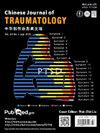在院前创伤护理中何时选择鞘内通路?以色列国防军的登记研究。
IF 1.9
4区 医学
Q2 ORTHOPEDICS
引用次数: 0
摘要
目的:在院前环境中,及时进行血管通路对于抢救大出血的创伤伤员至关重要,但在失血性休克期间,由于外周血管塌陷,实现外周静脉(PIV)通路可能具有挑战性。有人建议尽早使用骨内(IO)装置作为替代方案。本研究探讨了与 IO 通道要求相关的损伤特征和因素:方法:一项基于以色列国防军创伤登记处的登记队列研究(2010 - 2023 年)纳入了院前接受 PIV 或 IO 入路的创伤伤员。研究纳入了至少有一次PIV或IO通路尝试记录的伤员,但排除了没有血管通路的伤员。同时需要 PIV 和 IO 的伤员被归入 IO 组。单变量逻辑回归评估了与 IO 入路相关的因素。结果以几率比(OR)和 95% 置信区间(CI)的形式报告,以 p 为显著差异:在 3462 名伤员(86.3% 为男性,中位年龄为 22 岁)中,有 3287 人(94.9%)接受了 PIV 入路,175 人(5.1%)尝试过 IO 入路。在 IO 组中,30.3% 接受了冻干血浆,23.4% 接受了低滴度 O 组全血,明显高于 PIV 组。IO 组的院前死亡率为 35.0%。单变量分析显示,PIV尝试次数增加(OR = 1.69;95% CI:1.34 - 2.13)和深度休克体征(OR = 11.0;95% CI:5.5 - 23.3)与IO接入有明显关联:结论:在院前环境中,严重休克征兆与 IO 接入需求密切相关,每次连续的 PIV 尝试都会增加需要 IO 转换的可能性。在输入低滴度 O 组全血或冻干血浆的同时,院前死亡率也较高,这表明在紧急抢救情况下应使用 IO。对于严重休克的创伤伤员,建议尽早考虑 IO。本文章由计算机程序翻译,如有差异,请以英文原文为准。
When to choose intraosseous access in prehospital trauma care: A registry-based study from the Israel Defense Forces
Purpose
Prompt vascular access is crucial for resuscitating bleeding trauma casualties in prehospital settings but achieving peripheral intravenous (PIV) access can be challenging during hemorrhagic shock due to peripheral vessel collapse. Early intraosseous (IO) device use is suggested as an alternative. This study examines injury characteristics and factors linked to IO access requirements.
Methods
A registry-based cohort study from the Israel Defense Forces Trauma Registry (2010 – 2023) included trauma casualties receiving PIV or IO access prehospital. Casualties who had at least one documented PIV or IO access attempt were included, while those without vascular access were excluded. Casualties requiring both PIV and IO were classified in the IO group. Univariable logistic regression assessed the factors associated with IO access. Results were reported as odds ratios (OR) with 95% confidence intervals (CI), and significant difference was set at p < 0.05.
Results
Of 3462 casualties (86.3% male, the median age: 22 years), 3287 (94.9%) received PIV access and 175 (5.1%) had IO access attempts. In the IO group, 30.3% received freeze-dried plasma and 23.4% received low titer group O whole blood, significantly higher than that in the PIV group. Prehospital mortality was 35.0% in the IO group. Univariable analysis showed significant associations with IO access for increased PIV attempts (OR = 1.69; 95% CI: 1.34 – 2.13) and signs of profound shock (OR = 11.0; 95% CI: 5.5 – 23.3).
Conclusion
Profound shock signs are strongly linked to the need for IO access in prehospital settings with each successive PIV attempt increasing the likelihood of requiring IO conversion. IO access often accompanies low titer group O whole blood or freeze-dried plasma administration and higher prehospital mortality, indicating its use in emergent resuscitation situations. Early IO consideration is advised for trauma casualties with profound shock.
求助全文
通过发布文献求助,成功后即可免费获取论文全文。
去求助
来源期刊

Chinese Journal of Traumatology
ORTHOPEDICS-
CiteScore
3.80
自引率
4.80%
发文量
1707
审稿时长
28 weeks
期刊介绍:
Chinese Journal of Traumatology (CJT, ISSN 1008-1275) was launched in 1998 and is a peer-reviewed English journal authorized by Chinese Association of Trauma, Chinese Medical Association. It is multidisciplinary and designed to provide the most current and relevant information for both the clinical and basic research in the field of traumatic medicine. CJT primarily publishes expert forums, original papers, case reports and so on. Topics cover trauma system and management, surgical procedures, acute care, rehabilitation, post-traumatic complications, translational medicine, traffic medicine and other related areas. The journal especially emphasizes clinical application, technique, surgical video, guideline, recommendations for more effective surgical approaches.
 求助内容:
求助内容: 应助结果提醒方式:
应助结果提醒方式:


